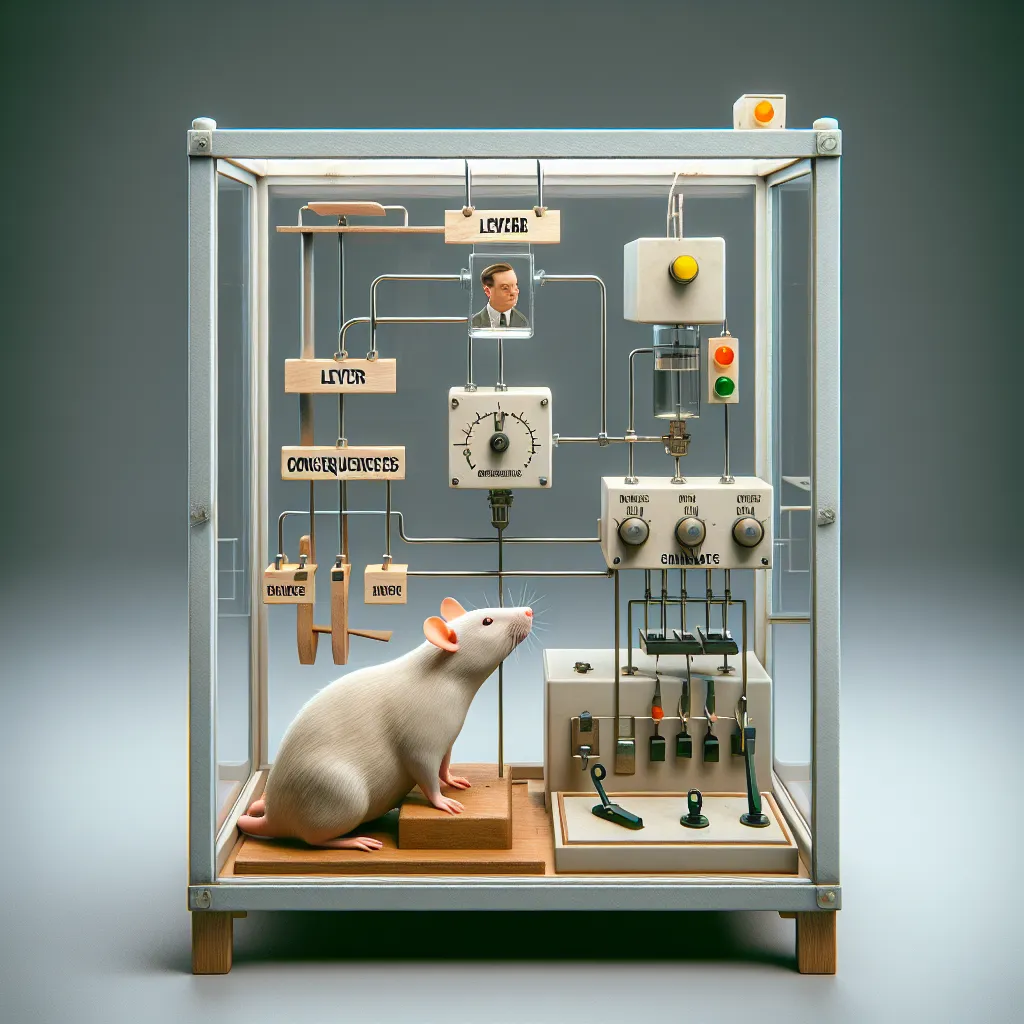Operant conditioning is a pivotal concept in the realm of behaviorism and psychology, with roots deeply embedded in the experimental work of one eminent figure: B.F. Skinner. The power of operant conditioning as elucidated by Skinner’s groundbreaking experiments has shaped our understanding of learning and behavior in profound ways, offering insight into human and animal behavior that continues to influence modern educational techniques, therapy practices, and even animal training.
Burrhus Frederic Skinner’s legacy as an American psychologist and behaviorist begins in the early 20th century, where his fascination with the cause and effect of behavior led to the development of a systematic approach to studying and shaping behavior. Operant conditioning, as he termed it, revolves around the idea that behavior is determined by its consequences. Skinner postulated that behaviors followed by favorable outcomes are more likely to recur, while those followed by adverse outcomes are less likely to be repeated.
Skinner’s experimental work commenced with the development of the operant conditioning chamber, commonly known as the Skinner Box. This controlled environment allowed for meticulous observation and measurement of behavior in response to various stimuli. Typically employed with rodents or pigeons, the Skinner Box was instrumental in enabling precise, repeatable experiments that formed the backbone of his research into operant conditioning.
At the heart of Skinner’s findings lay the concept of reinforcement and punishment. Reinforcement entails any consequence that strengthens or increases the frequency of a behavior. Skinner divided reinforcement into two types: positive and negative. Positive reinforcement involves the presentation of a stimulus, such as food or praise, which subsequently increases the likelihood of a behavior’s occurrence. Negative reinforcement, on the other hand, entails the removal of an unpleasant stimulus, like a loud noise or an electric shock, which also increases the likelihood of a behavior being repeated.
In addition to reinforcement, Skinner identified punishment as another crucial factor influencing behavior. Punishment, as opposed to reinforcement, tends to decrease the frequency of a behavior. Positive punishment involves introducing an aversive stimulus following a behavior, while negative punishment consists of removing a desirable stimulus as a consequence.
Skinner’s experiments were meticulously designed to demonstrate these principles. For example, he showed that a rat could be trained to press a lever to obtain food – a demonstration of positive reinforcement. In another scenario, the rat might learn to press a lever to cease an unpleasant electric current, illustrating negative reinforcement. The precise and observable changes in behavior highlighted the efficacy of systematic reinforcement, cementing the Skinner Box as a cornerstone of operant conditioning research.
Beyond the confines of the laboratory, Skinner’s work has widespread applications. In educational settings, operant conditioning reinforces the use of praise and rewards to bolster student performance. Within therapeutic contexts, behavior modification techniques draw heavily from operant conditioning principles to help individuals change unfavorable behaviors, such as addiction or aggression. Animal trainers rely on these concepts to teach pets and even wild animals to perform specific tasks or behaviors.
Moreover, operant conditioning principles are embedded in everyday life. For instance, the systems of rewards and penalties at workplaces, such as bonuses and disciplinary actions, are practical applications of reinforcement and punishment. Even parenting strategies often incorporate aspects of operant conditioning as parents reward desirable behavior in their children while admonishing unfavorable actions.
It’s essential to understand that operant conditioning, as demonstrated by Skinner, is a theory based on empirical evidence. Skinner’s commitment to an experimental and objective study of behavior stood in contrast to the psychoanalytic theories of his time, which delved into the unconscious mind – a realm not as readily amenable to direct observation and scientific scrutiny.
As far-reaching as Skinner’s experiments were, they also ignited discussions about the ethical implications of behavior control. Questions arose about the extent to which behaviors should be shaped through reinforcement and punishment, and whether such conditioning infringes on individual freedom or autonomy. Skinner himself foresaw a future where operant conditioning could potentially play a role in societal planning and improvement, as posited in his controversial book “Walden Two.”
The flexibility and adaptability of operant conditioning open up myriad avenues for practical applications, yet it is essential to be mindful of the underlying ethical considerations. Skinner’s influence endures in the field of Applied Behavior Analysis (ABA), where practitioners apply his principles to assist those with autism and other developmental disorders in acquiring essential life skills and reducing problematic behaviors.
The significance of B.F. Skinner’s experiments cannot be overstated. They have paved the way for an appreciation of the systematic and observable dimensions of learning and behavior. Operant conditioning stands as a testament to the power of consequences in shaping actions, offering both a theoretical framework and a set of practical tools that continue to evolve and impact diverse fields.
As we navigate the intricate dance between behavior and consequence, Skinner’s work serves as a beacon, illuminating the mechanisms by which behavior can be understood, predicted, and even modified. The legacy of Skinner’s operant conditioning experiments lives on, propelling advances in education, therapy, animal training, and beyond. It remains a cornerstone of psychological study and a tribute to the power of methodical scientific inquiry in unlocking the mysteries of behavior.



Leave a Comment